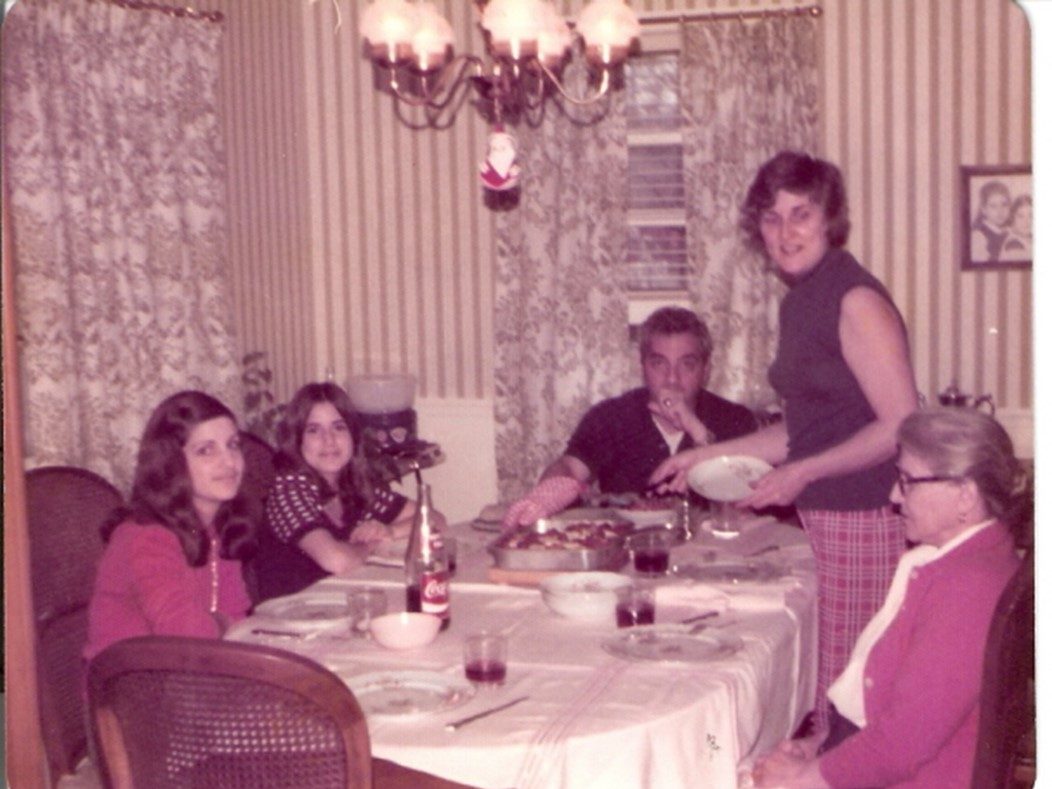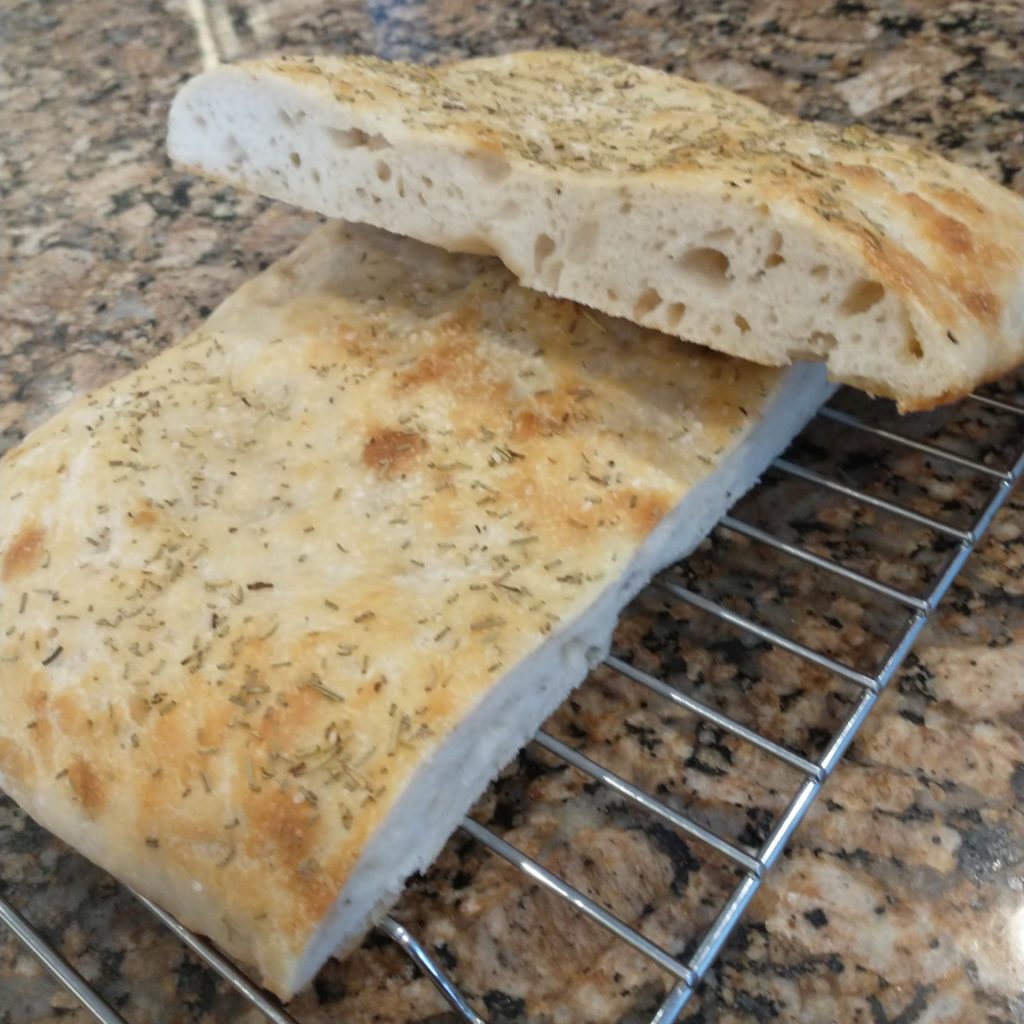My daughter came home one weekend while in her first year of college. My wife and I were more than happy to see her and enjoy a family meal — like always. As is my habit, I asked her what she wanted for dinner. I don’t remember her answer, but I’m sure it was something Mediterranean.
As we sat together at the kitchen table digging into the meal I had prepared, there was the normal table noise. Plates were clanging, silverware was clinking, and conversation about school and whatever else was in abundance.
As she enjoyed the respite from cafeteria food, my daughter paused and reflected. “You know, baba, it wasn’t until I went off to school that I realized how many of my friends don’t eat dinner with their family every night – or any night,” she said. “They act surprised and ask, ‘you mean your dad cooks dinner EVERY night?’ And I would say, yes.”
“It wasn’t until I went off to school that I realized how different I grew up from the rest of my friends. I kinda took all this for granted.”
My daughter had suddenly realized how different she was; how different her life was from her peers. We raised her as we were raised — in an environment in which the family table and family meal were more than just a place to eat. It was a place where we came together to share a meal, converse, argue, and stay connected to ourselves and each other. This was more than just a Mediterranean diet. It was a Mediterranean life.
What It Means to be Mediterranean
Being Italian and with a Greek wife, our family is familiar with the term, la dolce vita – the sweet life. But why do we call it “the sweet life”? It is a lifestyle and an eating pattern. And perhaps a glass of red wine along the way.
It’s also important to note that despite all the hype around it, there’s really no such thing as a “Mediterranean diet,” per se. At least, there is not just one Mediterranean diet — and it is not a diet in the conventional sense.
Greeks eat differently from Italians, who eat differently from the French and Spanish. But they share many of the same principles. It is generally accepted that the folks in countries bordering the Mediterranean Sea live longer and suffer less from cancer and cardiovascular ailments.
A not-so-surprising component is an eating pattern of weight control, and a diet low in red meat, sugar, and saturated fat, and high in vegetables, nuts and other healthful foods.
But the real secret is the Mediterranean lifestyle itself. It’s something that transcends the diet and is difficult to characterize.
It is tailored to each family or community. Certainly, the diet is part of it. But it also involves being active, finding time to relax, enjoying the simple things (and, conversely, not letting the simple things get you down), laughing often, being productive, and arguing constructively.
The first time I brought a young lady home to meet my family over dinner, she was surprised at how much we “yelled and argued” with each other. I told her that I did not know what she was talking about. “That was pretty normal,” I remember saying.
When I told that story to my parents, they were equally surprised. They had no recollection of “yelling” or an “argument.” A very telling clash of cultures had just happened.
The table was the place where all guards were down, and we connected with each other — warts and all. There was no holding back. You knew where you stood. There was only one volume. If the table was quiet it was only because the food was good and everyone was hungry.
The Essences of the Mediterranean Lifestyle: Connection
The Mediterranean lifestyle means spending time with family and friends — and that time is usually around the kitchen or dining room table!
Ask any Italian (or Greek for that matter) how they plan their day and there will be one consistent question: “What are we doing for dinner?”

This question is asked because no matter what is going on or what needs doing, the family dinner is at the core. It is an activity on the “critical path,” so to speak, of how each day gets planned. The table is where we laugh, cry, and, yes, argue.
It’s where we learn who we are, and from each other.
Today, my daughter has a better connection with herself and her humanity because of the connections we built around our family dinner table. We all do.
But living the Mediterranean lifestyle is about more than just eating and talking. It’s equally about connecting over the actual preparation of food. Whenever someone asks for the secret ingredient in one of my meals, the answer is always the same: “I added love.”
It’s not a joke or some veiled attempt to keep a secret ingredient secret.
The basis of Mediterranean cuisine is simple ingredients treated with respect. We can transform ground veal, salt, pepper, crumbled bread, and grated cheese into the most delicious and moist meatballs. But my nonni’s meatballs were different than my mom’s —and mine are different from them both even though it was all from the same recipe! Why?
Was it our techniques? Was it the skill of the cooks? Was it the equipment we used? Or was it the love we each put into satisfying our own little portion of humanity — the family and friends we were serving?
A little of all, I would think.

Using Food to Power Real Connection
When I conduct my Cook Like an Italian classes, I make it a point to tell stories about how my mother and grandmother manipulated simple ingredients into something special — the memories, the special occasions, and the grand tapestry that connects me with my heritage.
The meatballs being sautéed and “gravy” simmering every Sunday morning transcends the sense of smell – it is one big grand memory. I can smell the memory. Today, my family and I are physically separated, but remain mindful of the connections we share and which ground us and make us aware of who and what we are.
The “diet,” cooking, and eating are merely the vehicles for this connection.
My sister recently visited family in Italy whom we have never met. She and her family were welcomed as if they lived next door. My friends remember coming to my mom’s house for dinner – “I can still taste your mom’s lasagna” one said recently, 40 years afterwards.
It was the food, yes, but more importantly, it was how the food connected us together.
What a great lesson for the rest of humanity. Can we establish that connection one person, one family, one community at a time?
Yes, we can. Yes, you can. So, have dinner tonight. Invite someone over. Sit, relax, and have an intentional meal. Get connected to yourself, your friends, and your humanity. You’ll be living the Mediterranean lifestyle!
A Recipe to Get You Started
While I was tempted to end this article above, I knew that it would be cruel to spend all this time talking about the love and connection in Mediterranean cooking and not at least give you a recipe!
As I gave thought to what the most appropriate recipe would be, I was drawn to probably the oldest food known to humanity: bread.
Generally, bread is the magical result of four simple ingredients: flour, water, salt, and yeast. The intangible here is the ingredient called time. Making bread requires patience. It cannot be rushed. There is a good deal of wait time. It makes you mindful of the situation and offers an opportunity to pause and reflect.
Enjoy the journey. This is my take on focaccia, a traditional Italian flatbread.

FOCACCIA
INGREDIENTS 2 c. AP Flour ¾ c. Warm Water 1 t. Instant Yeast 1 T. Olive Oil plus more for top 1 t. Kosher Salt plus more for top 1 T. Dried Rosemary plus more for top
Yield – about 16 to18 oz. (@1 lb.) bread.
ORDER OF PRODUCTION Gently mix water and yeast in medium mixing bowl Add flour and mix After flour is “picked up” then add olive oil After a few minutes add salt Knead for about 6-8 minutes until all water and flour is incorporated. Dough should be slightly tacky without being sticky. Carefully add flour or water to get correct consistency. This is a hydrated (wetter) dough. Conditions like humidity and hardness/softness of water will require you adjust on the fly. Remember, a little water goes a long way, so be careful Let dough rest for about 15 minutes, then “pull” into a 9x13 rectangle and place on baking sheet lined with parchment. Cover and let rise for at least an hour or until double in size With your fingertips, gently push indentations in the dough. Let rise for another hour Preheat oven to 450 degrees Drizzle the top of the bread with some olive oil. Sprinkle with additional rosemary and salt Bake about 10 minutes until golden brown and delicious OR to an internal temperature of 190 to 200 degrees Let cool slightly before cutting and eating to let flavors settle.
Image credits: Laura Araujo and Chef Francesco Granito
